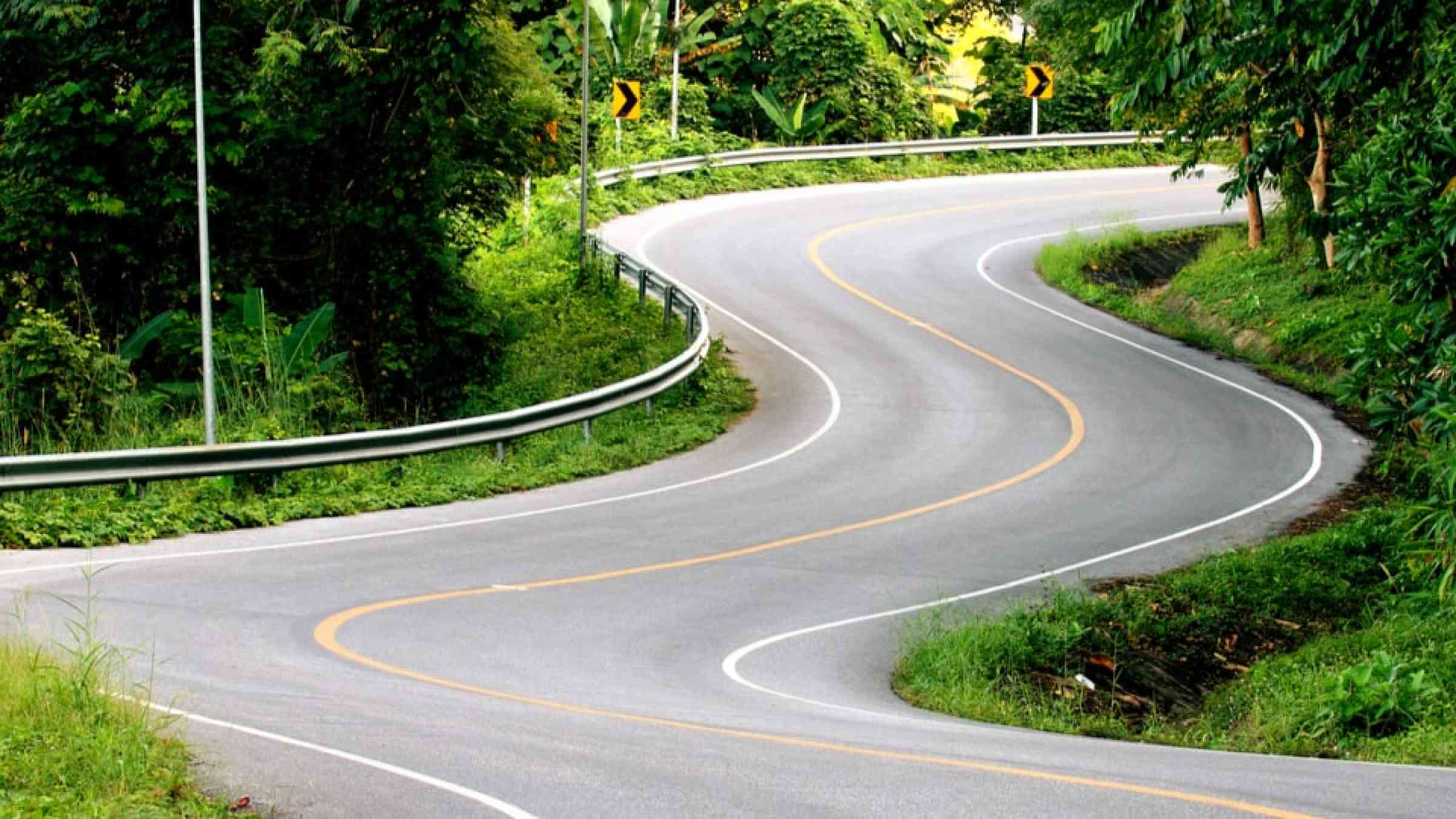Four ways to adapt roads in Central Asia to climate change

Central Asia is getting hotter. By the end of this century, average temperatures there are expected to rise by between 2°C and 5.7°C.
For the region’s roughly 65 million inhabitants, this means changing rainfall patterns, more frequent and stronger storms, increased drought, and prolonged dry spells.
From vast arid and semi-arid landscapes to grassy steppes and mountains, this changing climate has serious implications for the region’s varied terrain. Transport infrastructure in Kazakhstan, the Kyrgyz Republic, Tajikistan, Turkmenistan, and Uzbekistan—critical for moving goods and people around the heavily landlocked region—is becoming more prone to damage.
A recently launched ADB manual discusses how governments in the region can strengthen existing infrastructure and ensure a safe, climate-resilient road network. Here are four ways to make roads in Central Asia more climate resilient.
1. Stabilize the soil under roads to protect from flooding
Rain, snow, melting ice and landslides trigger flooding. In Central Asia, there are two types of floods: flash floods due to quick and abundant rainfall on low-permeable ground, and river floods caused by rivers breaking their banks after consistent rain or snow melting.
Flooding can soften the foundational material of roads, which are generally made of gravel, sand, silt, and clay. On the other hand, droughts shrink and crack these materials while re-wetting allows them to expand. This cycle compromises the ability of the soil to resist the stress exerted by vehicle traffic.
To address this, the soil needs to be stabilized. This increases stiffness and prevents permanent deformation, improving the resilience of roads especially in rural areas where they tend to be unpaved or lightly paved. The process is simple and involves blending the foundational materials with a specific binder that will be applied on the soil surface during construction.
Improving drainage system management, such as through periodic cleaning and prevention of blockages or damage, also helps to reduce the impacts of flooding. Efficient drainage systems reduce water infiltration into roads and limits softening and loss of resilience.
2. Reinforce slopes against soil erosion
Aside from flooding, intense rain can also erode large masses of soil from embankments and slopes, compromising road safety.
To reinforce embankments and slopes, governments can consider using soil nailing and installing gabions. Soil nailing uses steel elements that are resistant to tension to strengthen the soil. Meanwhile, gabions—often steel cages filled with rocks or concrete—are structures placed at the foot of the slope to stabilize it.
Bioengineering solutions, which involve planting trees and vegetation, can also protect slopes. These measures are low-cost but have limited ability to control erosion and stabilize slopes. But used together with other conventional measures like gabions, bioengineering solutions can be a good way to promote green and sustainable adaptation.
3. Use modified bitumen to protect roads from extreme heat
Many of the region’s inhabited areas experience long, dry summers and irregularly cold winters. On the desert plains, such as in Turkmenistan and Uzbekistan, temperatures currently reach 45°C during the summer and can drop as low as -25°C in winters. Roads are susceptible to the impact of this extreme heat. Roads are made with asphalt concrete that is composed of a polymeric binder called bitumen, which softens in the heat and stiffens when the temperature drops.
Bitumen modification could help boost the flexibility of asphalt during the summer–winter cycle. The process involves engineering the properties of natural bitumen, allowing it to retain stiffness in the summer and remain ductile in the winter. Modified bitumen is developed by manufacturers and can be purchased and incorporated during the production of asphalt concrete.
4. Install barriers to protect against avalanches and rock falls
Snow accumulating on slopes in mountainous areas, particularly wet snow which is heavier, can cause avalanches that can damage and block roads. To contain or reduce the volume of eroding snow and debris, slopes can be stabilized with barriers made of steel or wood.
The melting of permanent snow caps, coupled with increasing temperature, also leads to rock falls. Rapid melting of glaciers can cause masses of rock to break off and tumble-down slopes, threatening roads below. Attenuators, canopies, or drapes can be installed to serve as shock absorbers when boulders roll down slopes.